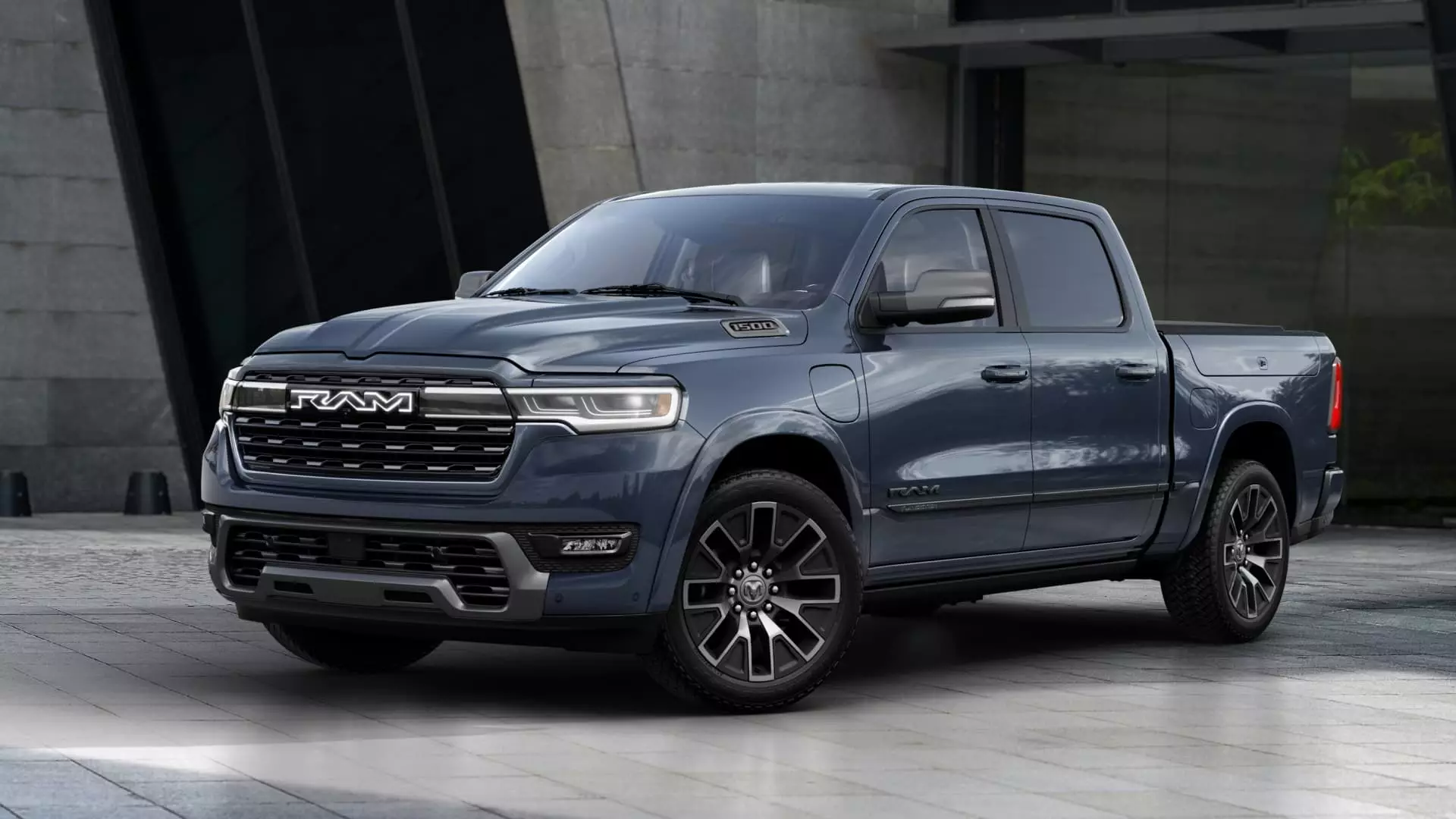Stellantis, the multinational automotive giant that oversees brands such as Chrysler and Jeep, has announced a significant postponement in the rollout of its all-electric Ram pickup truck, pushing its debut from 2025 to 2026. This decision comes at a time when the electric vehicle (EV) market is grappling with sluggish growth and competitors are struggling to turn profits in the increasingly crowded segment of electric trucks. The delayed release of the fully battery-operated Ram 1500 REV highlights a broader trend where manufacturers are reassessing their strategies in the face of consumer hesitance to switch to electric alternatives and the challenges in the market.
In lieu of the full battery-electric truck, Stellantis is redirecting its efforts toward the launch of a hybrid version called the Ramcharger. This innovative vehicle combines traditional gasoline power with electric drive technology, designed to capture the interest of consumers who may be hesitant about fully electric vehicles. Ram’s decision to prioritize the Ramcharger appears to be a calculated move aimed at mitigating the risks associated with launching a fully electric model amid uncertain market demand.
Ram’s spokesperson elaborated on this shift, noting that the decision was influenced by robust consumer enthusiasm and a strategic advantage in technological innovation. The Ramcharger is positioned as a response to market feedback, illustrating how automakers must remain agile and responsive to customer needs in a rapidly changing environment. Anticipated to open for customer orders in the first half of 2025, the Ramcharger is emerging as a cornerstone of Stellantis’ future offerings.
This strategic redirection comes on the heels of a significant management shake-up at Stellantis, which saw the return of Ram CEO Tim Kuniskis. Kuniskis, who briefly retired earlier this year, brings a sense of urgency and a promise for transformative changes to the beleaguered brand, which has recently reported a staggering 24% decline in sales through the third quarter. During a media briefing, Kuniskis underscored the challenges the brand faces, attributing the sales struggles to delays in product launches and redesigns within its truck lineup.
His commitment to making impactful changes has sparked interest and speculation regarding the future direction of Ram. By referring to the Ramcharger as the brand’s “Goldilocks truck,” he suggests that this hybrid model might strike the right balance of power and efficiency, appealing to a wider audience.
The Ramcharger is classified as an Extended Range Electric Vehicle (EREV), capable of operating on electricity until its battery is depleted, at which point a gasoline engine takes over. With a projected total range of up to 690 miles, including around 145 miles on electric power alone, this model offers a compelling proposition for consumers wary of range anxiety associated with fully electric vehicles.
This pivot toward hybrid technology may serve not only to capture immediate market interest but also to position Stellantis favorably for the eventual rollout of the all-electric Ram 1500 REV planned for 2026. As the automotive industry continues to navigate the complexities of transitioning to electrification, Stellantis’ adaptive measures may ultimately dictate its success in the evolving landscape.

